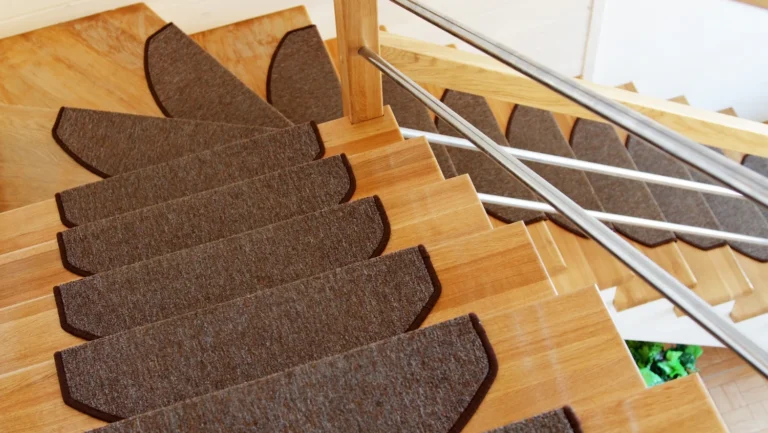A Guide to Avoiding Costly Errors and Ensuring Safe and Durable Stair Construction
Introduction
When it comes to building or renovating a staircase, selecting the right adhesive for stair treads is crucial for ensuring a safe and durable construction. However, many homeowners make common mistakes when choosing adhesives, which can lead to costly errors, safety hazards, and premature wear and tear. In this article, we will highlight the most common mistakes homeowners make when selecting adhesives for stair treads and provide guidance on how to avoid them.
Adhesive Selection Mistakes
Incompatible Adhesives
One of the most common mistakes homeowners make is using water-based or low VOC adhesives with solid wood treads. These types of adhesives can cause warping and cupping of the wood due to excess moisture [1]. This can lead to uneven surfaces, gaps between the treads and risers, and even safety hazards. To avoid this mistake, it’s essential to choose adhesives that are specifically designed for use with solid wood treads.
For example, polyurethane-based adhesives are a popular choice for solid wood treads because they provide a strong and durable bond [2]. However, it’s essential to follow the manufacturer’s instructions and ensure that the adhesive is fully cured before exposing the stairs to traffic.
Ignoring Adhesive Instructions
Another common mistake homeowners make is ignoring adhesive instructions, especially regarding minimum temperature requirements. Most adhesives require a specific temperature range to set properly, and failing to follow these instructions can result in a weakened bond [3]. This can lead to premature wear and tear, squeaking, and even safety hazards.
To avoid this mistake, it’s essential to read the adhesive instructions thoroughly and ensure that the temperature range is suitable for the installation. It’s also important to follow the recommended application and curing times to ensure a strong and durable bond.
Application and Installation Mistakes
Insufficient Curing Time
Insufficient curing time is another common mistake homeowners make when installing stair treads. Most adhesives require at least 24 hours to fully cure, and premature use or traffic on the stairs can weaken the bond [4]. This can lead to premature wear and tear, squeaking, and even safety hazards.
To avoid this mistake, it’s essential to allow the adhesive to fully cure before exposing the stairs to traffic. It’s also important to follow the manufacturer’s instructions and ensure that the adhesive is fully cured before applying any finishes or coatings.
Poor Ventilation and Safety Precautions
Applying adhesive in poorly ventilated areas without proper safety precautions is another common mistake homeowners make. This can lead to health hazards, including respiratory problems and skin irritation [5]. To avoid this mistake, it’s essential to ensure good ventilation and follow proper safety precautions, including wearing protective gear and working in a well-ventilated area.
Inadequate Surface Preparation
Inadequate surface preparation is another common mistake homeowners make when installing stair treads. Failing to clean and remove dirt and debris from the surface can weaken the adhesive bond [6]. This can lead to premature wear and tear, squeaking, and even safety hazards.
To avoid this mistake, it’s essential to properly prepare the surface before applying the adhesive. This includes cleaning and removing dirt and debris, and ensuring that the surface is dry and free of any contaminants.
Fastening and Nailing Mistakes
Incorrect Nail Size and Placement
Using the wrong nail size or placing nails too close to the edge of the treads is another common mistake homeowners make. This can lead to lifting or cracking of the treads over time [7]. To avoid this mistake, it’s essential to choose the correct nail size and placement for secure and durable stair construction.
Relying Solely on Nails or Staples
Relying solely on nails or staples without using adhesive is another common mistake homeowners make. This can lead to squeaking and weakened bonds [8]. To avoid this mistake, it’s essential to use adhesive in conjunction with nails or staples for secure and durable stair construction.
Specialized Installation Requirements
Epoxy Nose Filler and Mold-Release Compounds
Using epoxy nose filler for vinyl treads or when gaps are present between the tread nose and substrate is essential for ensuring a strong and durable bond [9]. Failing to remove mold-release compounds from the back of the treads before applying adhesive can also weaken the bond [10]. To avoid these mistakes, it’s essential to follow the manufacturer’s instructions and ensure that the surface is properly prepared.
Adhesive Bond Testing and Local Building Codes
Performing an adhesive bond test prior to full installation is essential for ensuring a strong and durable bond [11]. Failing to comply with local building codes and ADA requirements for stair construction can also lead to safety hazards and costly errors [12]. To avoid these mistakes, it’s essential to follow the manufacturer’s instructions and ensure that the installation meets local building codes and ADA requirements.
Conclusion
Selecting the right adhesive for stair treads is crucial for ensuring a safe and durable construction. However, many homeowners make common mistakes when choosing adhesives, which can lead to costly errors, safety hazards, and premature wear and tear. By following the guidance outlined in this article, homeowners can avoid these mistakes and ensure a strong and durable bond for their stair treads.
Remember to always read the adhesive instructions thoroughly, follow the manufacturer’s instructions, and ensure that the surface is properly prepared. It’s also essential to allow the adhesive to fully cure before exposing the stairs to traffic and to follow proper safety precautions.
